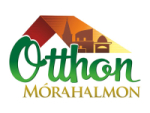Document management and business strategies are critical to an organized, efficient and compliant company. A well-implemented document management strategy improves productivity, facilitates collaboration, ensures regulatory compliance reduces the risk of data loss, and enhances overall efficiency. It involves the collection of documents, their storage, indexing, and retrieval.
A comprehensive document management system includes an evaluation of how documents are managed within an organization, determines any bottlenecks, inefficiencies or other issues, and creates and executes a plan to tackle these issues. A successful document management strategy should also include a detailed outline of clear procedures known as Standard Operating Procedures to encompass the entire document lifecycle, including creation, storage sharing, version control and much more.
One of the most important characteristics of a solid document management system is that it permits employees to access files and documents from any device connected to internet. This is a great benefit for businesses that rely on remote workers or who travel frequently. The use of a solid document management system in place can prevent important files from being misplaced or lost and also helps save time that would be spent searching for them. Document tagging features allow users to locate the content they’re looking for using just a few key words, and find the file with confidence. This allows them to spend more time on important work. By cutting down on the time it takes to locate important files, and ensuring that the right people can view the documents they need at the time they need them, companies can maximize productivity.
